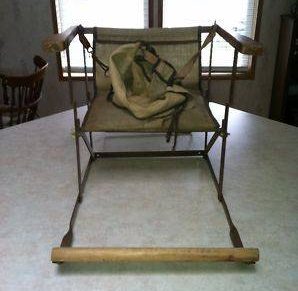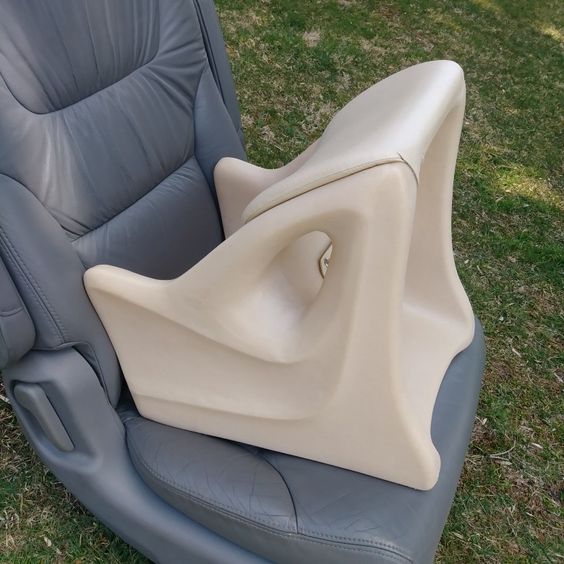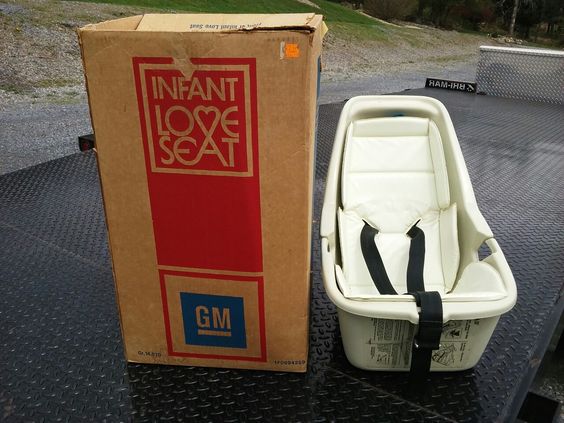
Modern Canadian car seats are standardized and must follow strict safety regulations, but it wasn’t that long ago that rules didn’t exist.
The Bunny Bear Company made child seats in 1933, however the devices were mainly intended to stop kids from moving around the car.

Child safety wasn’t top of mind until the late 1960s and early 1970s when General Motors came out with the Infant Love Seat and the Ford Motor Company released the Tot-Guard.
A 1973 Ford press release, posted on The Henry Ford museum’s website, said the Tot-Guard “is designed to give your child essential protection while riding in an automobile. The Tot-Guard is secured by the conventional lap belt which is standard equipment in almost every automobile.”
“When you look back at what we called a car seat in the 1970s and 1980s, they’re what we’d call a bouncy chair practically,” said Trudy Slaght, a technician, instructor and trainer with the Child Passenger Safety Association of Canada.
READ MORE: When should parents be worried about head bumps and bruises in kids?
Janet Van Voorst, from Sturgeon County Alta., grew up in the 1960s and remembers moving from Alberta to B.C. in an old station wagon and her infant brother rolled around the car.
“My younger brother was about six months of age and there was no car seat or anything for him.
“He was either laying on the seat or laying on the back of the station wagon with my brother and I as we played,” Van Voorst said.
The biggest change in car seats since the 1970s has been design, Slaght said.
“They’ve grown, so they’ve become more user-friendly and they also fit quite a larger range for the heights and weights of children,” she said.
Slaght’s own daughter was born in the 1990s and rode in a car seat with just a three-point harness.
“It buckled up between her legs, it went over her shoulders. There was no harness that went over her hips,” Slaght said. “Some of the three-point harnesses, the buckle was way out to a newborn baby’s knees, so baby would slouch and move to the side.”
Canadian safety standards were expanded in the 1980s, and overhauled substantially in the 1990s to a version that is closer to what we have today. In Canada now, car seats are manufactured with a five-point harness, expiry dates, weight limits and a national safety mark.
According to the Canadian Paediatric Society, child seats, when used correctly, reduce the risk of fatal injury by 71 per cent.
Slaght said she predicts the next big advancement in car seat technology will be in side impact safety.
“I can think of three or four new seats that are coming out just this year alone,” she said.
“When you look at the grand scale of things, that’s actually pretty rapid advancement.”
Want more ways to keep up to date? Check out the “Family Matters” podcast! If you haven’t subscribed yet — what are you waiting for?
Subscribing’s easy! Here’s how…

- Open the Apple Podcasts app, search for “Family Matters” and select it from the list of results.
- Once on the Family Matters page, click the “Subscribe” button to have new episodes sent to your mobile device for free.
- Click the name of an episode from the list below to listen.

- Open the Google Podcasts app, search for “Family Matters” and select it from the list of results.
- Once on the Family Matters page, click the “Subscribe” button to have new episodes sent to your mobile device for free.
- Click the name of an episode from the list below to listen.












Comments